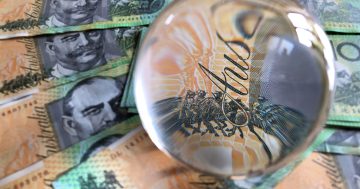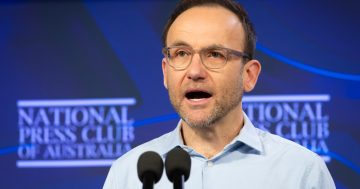Anthony Keane* says it’s nice to get a dividend pay-out, but what’s the point if you’re losing twice as much money when the share price sinks?
 Share dividends have been a huge source of income and wealth for Australians for decades.
Share dividends have been a huge source of income and wealth for Australians for decades.
Now, fresh forces in the finance world mean that some old ideas need to be trashed.
The popular set-and-forget strategy of relying on banks and Telstra shares to provide good dividends and growth has collapsed.
Newer, nimbler options are emerging.
Investment specialists say people should diversify their portfolios and focus more on future dividends rather than a high income today.
Telstra is a glaring example.
It is currently paying a dividend yield of 4.9 per cent, twice as high as bank interest, but its share price has halved in the past three years and its final dividend dropped from 15.5c to 11c.
Managing Director of Plato Investment Management, Don Hamson said Telstra’s slide showed that investing was not all about income.
“It doesn’t matter how much income you get — if you have lost that much capital your returns look pretty ordinary,” Dr Hamson said.
“Telstra’s now paying a part ordinary dividend and part special dividend. To us, it’s a signal that the special dividend may not be around in a year or two.”
Compare this with Aussie biotech giant CSL, which has a dividend yield of just 0.85 per cent.
However, its final dividend of $1.28 was up from 90c just three years ago, and 23c a decade ago.
Its share price has also climbed 150 per cent in three years.
Big banks have long been solid dividend payers but their share prices have been struggling amid the Royal Commission and tough competition.
“I’m still positive about the banks but there’s a level of uncertainty,” Dr Hamson said.
“At the moment we are seeing some good dividends coming out of the resources area but I’m not going to say that’s going to be great for the next 20 years. It’s very cyclical.”
Investment options are increasing for people wanting to leave dividend choice to the experts.
Low-cost exchange traded funds have boomed in recent years, while Plato runs managed funds and listed investment companies that target growing dividends.
“The way we get high yield is active rotation,” Dr Hamson said.
“In Europe a lot of companies pay single large annual dividends. You go in for two months, get the dividend, then sell.”
Director of Catapult Wealth, Tony Catt said dividend-focused investment funds were increasing in popularity as their fees fell.
He said much of the blame for traditional strategies rested with financial planners and stockbrokers.
“We get far too conscious of recommending things based on today’s dividend and perhaps not considering the growth,” Mr Catt said.
“The bottom line is it’s not about what the dividend is today — it’s about the growth in the dividends.
“It’s an education thing, and a little bit of a leap of faith, because people often want the money now.”
Mr Catt urged investors to understand diversification and risk, because many ignored this in their chase for yield, skewing their portfolios and adding risk.
Chief Economist at CommSec, Craig James said the percentage of Australian companies handing out cash was at a record high, with more than 90 per cent in last month’s profit reporting season announcing dividends.
“Overall, companies are making money and remain keen to pay dividends,” Mr James said.
*Anthony Keane is a personal finance writer at News Corp Australia, covering shares, property, super and other wacky things. He tweets @keanemoney
This article first appeared at www.news.com.au.








